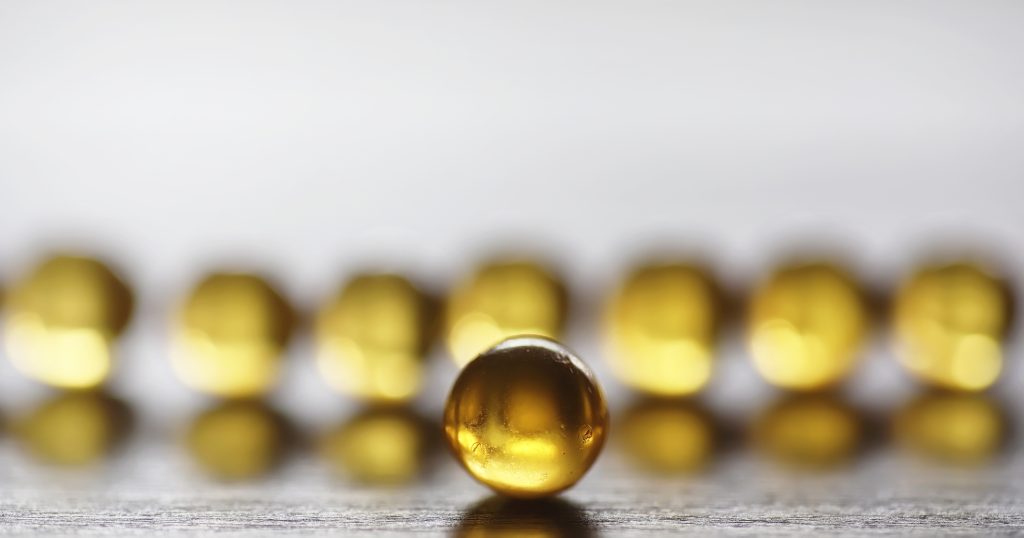Lipid-based nutraceuticals, such as fish oils, plant-derived omega-3s, and fat-soluble vitamin blends, are increasingly valued for their health benefits. However, these formulations are inherently prone to oxidative degradation, especially during storage and distribution. The result can be loss of efficacy, unpleasant odors, and reduced consumer trust. Extending the shelf life of nutraceutical oils and softgels without compromising quality or clean-label requirements is a key challenge for supplement manufacturers. Natural antioxidants offer an effective and clean label-friendly strategy for oxidative protection in both oils and softgel capsules.
Causes of oxidation in nutraceutical oils and softgels
The oxidative deterioration of nutraceutical oils and softgels is primarily initiated by the high content of fatty acids, which are particularly vulnerable to oxygen, heat, light, and metal ions. Once lipid oxidation starts, it generates reactive species that break down fatty acid chains, leading to primary oxidation products (hydroperoxides) and then secondary compounds (aldehydes, ketones, etc.) responsible for rancid odors and off-flavors.
Fat oxidation not only affects organoleptic qualities but also degrades active ingredients such as omega-3 fatty acids, Vitamin A, and coenzyme Q10. This loss of bioactivity can compromise the therapeutic value of the product, undermining both regulatory compliance and consumer confidence.
Softgel encapsulation presents a clear advantage in protecting lipid-based nutraceuticals over bulk oils. It acts as a physical barrier against external factors. Nevertheless, oxygen permeability is influenced by the composition and thickness of gelatin film, the glycerol content, and the metal ion content of the encapsulation material. Furthermore, residual oxygen during filling and headspace oxygen in the packaging are additional sources of concern. If oxygen penetrates the capsules, it initiates the oxidation process, which can reduce the shelf life of the finished product.
Natural antioxidants for nutraceutical oils and softgels stabilization: tocopherols and beyond
Natural antioxidants work by interrupting the oxidative chain reaction, scavenging free radicals, and stabilizing peroxides before they cause further degradation. Among them, tocopherols, natural forms of vitamin E, are the most widely used in the nutraceutical industry. They are lipophilic and effective at low concentrations, making them particularly suited to stabilize fats and oils.
Tocopherols occur naturally in vegetable oils and are available in several isomeric forms, with d-alpha-tocopherol (natural) being the biologically active one. In contrast to synthetic DL-alpha-tocopherol, the natural form is derived from plant sources and offers both technological and nutritional benefits, making it preferable in premium nutraceutical formulations.
The effect of tocopherols on oil stability can be enhanced by adding other compounds that act in synergy, such as ascorbic acid or amine-phospholipids. Natural rosemary extract, rich in phenolic diterpenes such as carnosic acid and carnosol, is another highly effective antioxidant for shelf life extension. It is often used in combination with tocopherols to further enhance oxidative stability, especially under demanding conditions such as high temperatures or extended shelf lives.
Key formulation strategies to extend shelf life in lipid-based supplements
Formulating stable lipid-based nutraceuticals requires more than just the selection of high-quality natural antioxidants. The entire process, from oil sourcing to encapsulation and packaging, must be designed to prevent oxidative degradation. According to GOED (The Global Organization for EPA and DHA omega-3s), best practices suggest that oxidative stability depends on tightly controlling variables such as exposure to oxygen, temperature, light, and metal ions throughout production and storage [1]. Proper use of inert atmospheres (e.g., nitrogen or argon) during blending and oil transfer, maintaining low processing temperatures, and minimizing headspace in containers for non-encapsulated oil are key preventive steps.
Encapsulation processes should further protect the active oils. For softgels, using opaque or barrier-enhanced shells, carefully controlling water activity, and minimizing residual surface oil helps prevent oxidation both inside and outside the capsule.
Packaging under controlled humidity and temperature conditions, along with purging the headspace with inert gas, extends the protection into the distribution and retail stages. These technical strategies, when integrated systematically, ensure that lipid-based supplements meet their shelf-life targets while preserving quality and efficacy.
Choosing the right antioxidant for your nutraceutical product
Selecting the most suitable antioxidant system depends on several factors: the specific oil used, the expected shelf life, target market regulations, and label requirements. For manufacturers seeking a natural, non-GMO, and highly effective solution tailored to nutraceutical applications, Btsa’s Nutrabiol® offers a compelling option.
Nutrabiol® is a line of antioxidant solutions specifically developed to stabilize oils and lipid-based supplements in the nutraceutical sector. Based on natural tocopherols, Nutrabiol® is available in various concentrations and is designed to meet different formulation needs, whether in bulk oil or softgel capsules. Its effectiveness lies in both its high purity and its ability to deliver protection without altering the organoleptic profile of the final product.
What distinguishes Nutrabiol® is its customizable formulation and compatibility with organic and clean-label products, offering an ideal balance between the oxidative stability of nutraceuticals and regulatory flexibility. Choosing Nutrabiol® means selecting proven protection, innovative solutions, and responsible manufacturing for your nutraceutical line.
Sources
[1] Global Organization for EPA and DHA Omega-3s (GOED). GOED Best-Practice Guidelines: Oxidation Control. Salt Lake City (UT): GOED; 2017 Sep 12.

